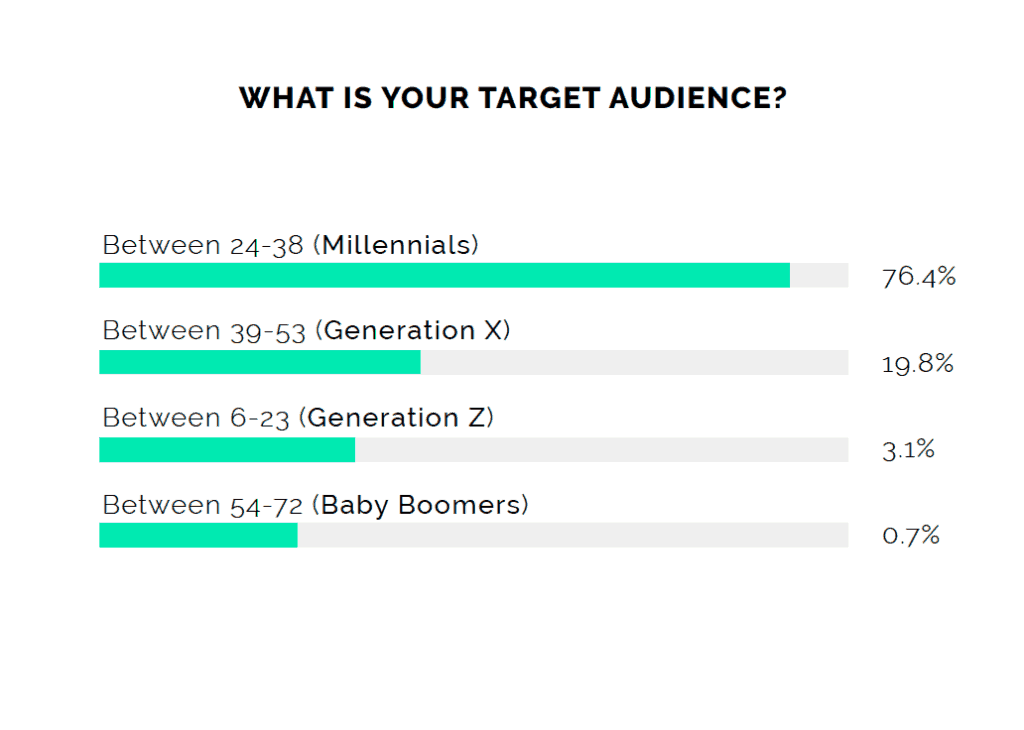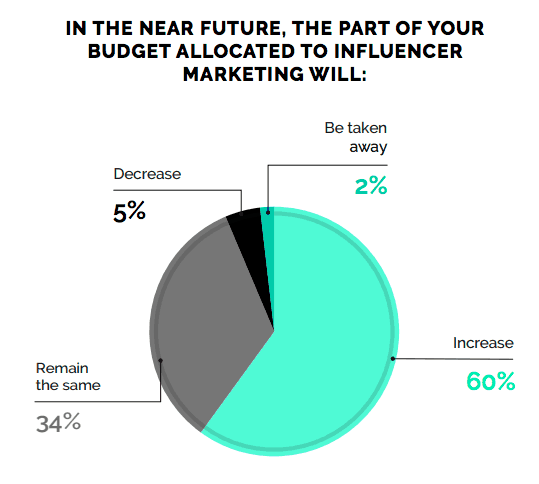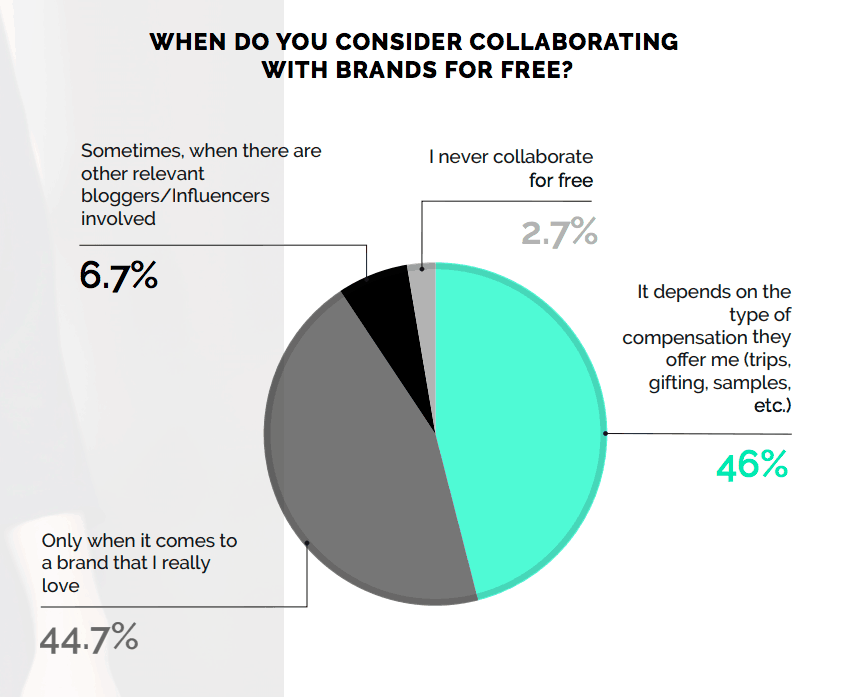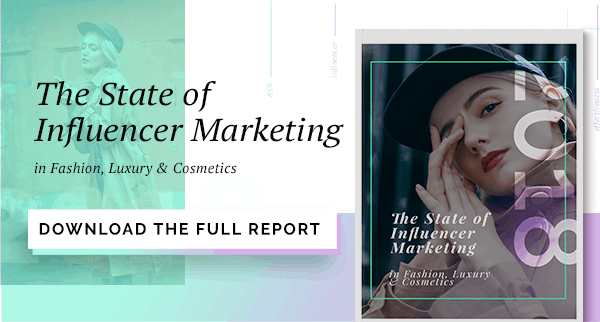Our fourth annual State of Influencer Marketing report has just arrived and this year it's bigger and better than ever! Not only have we counted on the opinions and insights of 600 fashion, luxury and cosmetic professionals specialized in marketing, communications, and PR, we've also had the pleasure of interviewing Garance Doré – one of the most respectable industry influencers and author of New York Times Best Seller, Love x Style x Life. This report also inaugurates the first time we've surveyed influencers in order to get the other side of the story, 200 opinion leaders to be exact: members of our private communities Style Coalition (our premium influencer network of Micro, Mid-Tier & Mega Influencers), as well as GPS Radar (the members-only platform for FLC professionals to connect and share).
According to our stats the influencer phenomenon has firmly established itself over the last five years with almost 80% of professionals claiming to have implemented influencer campaigns in 2017, a 13% increase from previous year's figures. In the words of Garance Doré herself, bloggers and influencers "have been professionals for a while". As this practice becomes more prevalent throughout the fashion, luxury and cosmetic industries, there's no denying that influencer marketing is quickly turning into an indispensable part of our digital marketing strategies thanks to it's ability to generate brand awareness and boost sales.
After gathering the data and talking to industry experts, including Emma Gregson, Managing Director at ITB, and Aliza Licht, EVP of brand marketing & communications at Alice + Olivia and the author of Leave Your Mark, these are our three key facts we'd like to highlight from our 2018 State of Influencer Marketing report:
The State of Influencer Marketing 2018: 3 Key Facts
1. Influencers Are the "Holy Grail" for Millennial-focused Brands
The effectiveness of traditional advertising has been fading for a while, and this is largely due to the fact that millennials (24-to-38 year olds) prefer to engage in conversation and take part in a brand's story rather than passively gaze at an ad. “Today in the buying process there’s a new step, the Zero Moment of Truth (ZMOT), when the consumer looks online for info, reviews, opinions, etc...” as industry professional Stefano Ardito, Managing Director of TwentyTwenty, says in our report. As millennials take time to carefully select products by exploring social channels and reviews, influencers play a key role in swaying consumers one way or another – they are the direct link between the brand and the buyer.
Searching for reviews and second opinions of products isn't the only reason why millennials look to influencers, they also seek style inspiration as, thanks to social media, fashion has been democratized and consumers are no longer told what to wear, rather "encouraged to explore their own style through inspiration of others" as Emma Gregson, Managing Director of ITB Worldwide, tells us.
We found that professionals have an increasing understanding of this phenomenon as 76% confirmed that millennials were at the focus of their influencer marketing strategies. Considering that Generation Y made up 30 percent of all luxury spending last year, targeting millennials is certainly the way forward if you want to stay ahead of the game in our highly saturated market.

2. Brands Are Investing More in Tools and Specialized Teams
As influencer marketing expands throughout the fashion, luxury and cosmetic industries and becomes an established practice, more and more brands are incrementing budgets; 60% of professionals confirmed that their budgets will grow in the next year. This increase in cash flow will continue to allow professionals to invest in influencer-relationship management teams, as well as influencer-specialized tools.

An increase in budget isn't the only piece of evidence pointing to brands growing their influencer management teams, in this year's report we also observed that 9.3% of companies have these types of in-house teams, compared to 7% the year before. And, as far as using tools designed to help these teams with their influencer marketing strategies, a total of 24% of industry experts claimed to have used either influencer marketplaces or influencer marketing software in 2017.
We can only imagine that these figures will continue growing, especially as influencer identification and influencer campaign measurement ranked as the top two challenges in 2017 according to industry experts, representing 29.6% and 28.5% respectively. As the array of micro, macro, mega and celebrity influencers continues to expand, we predict that professionals will increasingly turn to influencer marketplaces to help them choose the right opinion leader for their campaigns.
3. Paid & Organic Strategies Coexist
The second part in our State of Influencer Marketing report, dedicated to the 200 influencers we surveyed, will offer you useful insights on how to approach influencers and ultimately, how as a fashion, luxury or cosmetic brand, you can balance your influencer strategies with paid and un-paid methods. Not all budgets can pay the lofty price of working with a mega or celebrity influencer, which is why many brands turn to micro-influencers. While micro-influencers may be more likely to accept free merchandise or products in exchange for collaborations, this isn't the only reason why they might be the right choice for some companies. According to Jeoffrey Romano, the Digital PR & Social Media Manager of Santoni, “micro-influencers help to engage the target audience and to drive more conversions because they can connect with a faithful audience.”
Additionally, we found that 63.3% of opinion leaders claimed that generating valuable content for their communities was their primary objective behind working on campaigns with brands, above monetary compensation.
We also discovered that 46% of opinion leaders were willing to work for free if they received enticing non-monetary rewards, and 44.7% admitted that they'd be happy to collaborate voluntarily if it involved a brand they loved. From this data we can confirm that industry professionals have a wide array of options when it comes to their influencer strategies, incentivizing opinion leaders through paid or unpaid (but with other types of compensation) methods.

Apart from the 3 key takeaways we've chosen to highlight above, we're also including this list of 10 facts extracted from the surveys to offer you a quick snapshot of the overall conclusions:

This is only a small snippet of what we have to offer and there's so much more to discover from the data we extracted. To find out more about what industry professionals and influencers had to say about this established digital marketing practice, dive into our thorough 2018 State of Influencer Marketing report:

